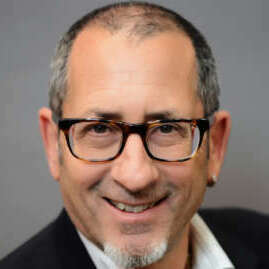Technology refresh, business process improvement, and improving services delivered to customers and constituencies – they’re all inputs to the ongoing modernization efforts at federal agencies. Agencies caught in the technical debt of outdated technologies are finding the soundest approach to modernization is not simply to upgrade technology for technology’s sake, but rather to approach modernization from the outside in. It means looking at the desired service outcome, than reworking process behind the scenes to enable the service, then choosing the best technology to support the process.
Gwen Cadieux, the director of Enterprise IT and Managed Services at GDIT, is a strong proponent of that approach, having seen it succeed across a variety of agencies.
The outside in approach also lets agencies manage another crucial element, namely the budget.
“I think one of the biggest issues is the budgets, not only the size of the budgets, but the budget cycles, and being able to fit the amount of modernization that takes place, or needs to take place with some of our enterprises, and within those budgets,” Cadieux said.
She said that by taking a technology-first approach to modernization, agencies often risk siphoning off dollars unnecessarily by acquiring redundant products. Cadieux cited one agency that had purchased seven network management tools, each for a different segment of the network, each needing its own maintenance and upgrade costs. She cautioned against the “shiny object syndrome” when presented with new products. Better to ask, “Okay, that’s great, but what problem are you trying to solve with that? Do you really need that right now?”
Another risk of adding technology is that it can interfere with technical dependencies within or among complex systems. Cadieux said an integrator like GDIT, with its constellation of best-of-class technology partners, can help an agency strategize technology modernization, taking into account dependencies and refresh cycles. Ideally, this happens within the context of the mission delivery plans that should be driving the product acquisitions.
“We have tools that help us identify those dependencies and keep track of those dependencies as the baseline continues to change,” Cadieux said. For example, she added, “You don’t just start ripping out routers and putting in software defined network routers. You have to plan that out. You have to understand what the implications are across your enterprise.”
Cadieux said agencies are finding success in the incremental but continuous approach to digital modernization. That means determining a single, mission or service delivery requirement. Then designing the technical means to achieve it. Surprisingly, she said, this can deliver more improvement faster than the outdated grand design, big bang, or waterfall development approaches of the past.
“The true driver is the speed of change, and how quickly you need to get new capabilities, new technologies into an architecture,” Cadieux said. “It’s an iterative process. You don’t really have the time to wait until you get all the way to the end.” In this manner, customers can see progress while offering feedback on the next round of capabilities needed. In other words, use the DevOps or DevSecOps model.
“I think most of our customers are comfortable or familiar enough with the DevSecOps process that it’s not as hard a sell as maybe five or 10 years ago,” Cadieux said.
Cadieux said emerging technologies such as 5G telecom, robotic process automation, and artificial intelligence will transform mission delivery and bring all sorts of new efficiencies to agencies. But agency teams must first establish the mission need, she said.
Important to establishing the mission need, she said, is involving all of the parties with a stake in modernization. That includes the users themselves.
“If you don’t talk to them,” Cadieux said, “you’re missing a huge piece of your of your requirements and information to help inform better decisions about what kind of technologies you may or may not need.”
Approach to Enterprise Modernization
Start [modernization] with the need, or what the problem is that your customer is trying to address. Start there, don't start with the solution. Oftentimes, we get that I call it the shiny object syndrome; something new hits the market. Okay, that's great, but what problem are you trying to solve with that? Do you really need that right now?
Gwen Cadieux
Director, Enterprise IT & Managed Services, GDIT
The people who will tell you the honest truth about what's working, what's not working, or where they feel [technology] can better support them are your end users. Those are the folks who know more about it than anybody else, even if you're the CIO.
Gwen Cadieux
Director, Enterprise IT & Managed Services, GDIT
Listen to the full show:
Copyright
© 2025 Federal News Network. All rights reserved. This website is not intended for users located within the European Economic Area.








